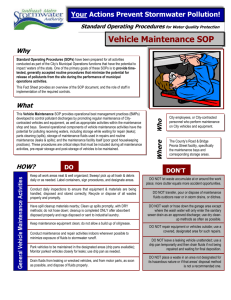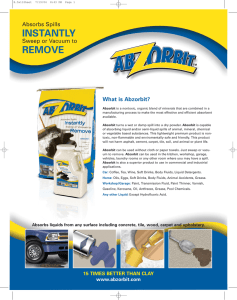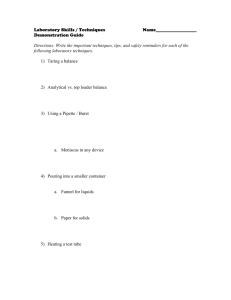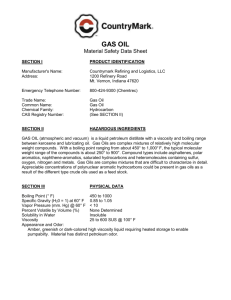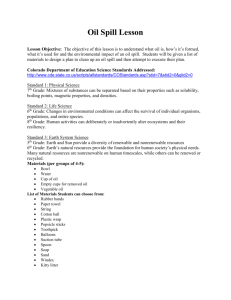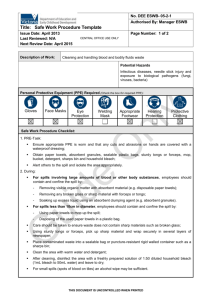Vehicle and Equipment Maintenance
advertisement
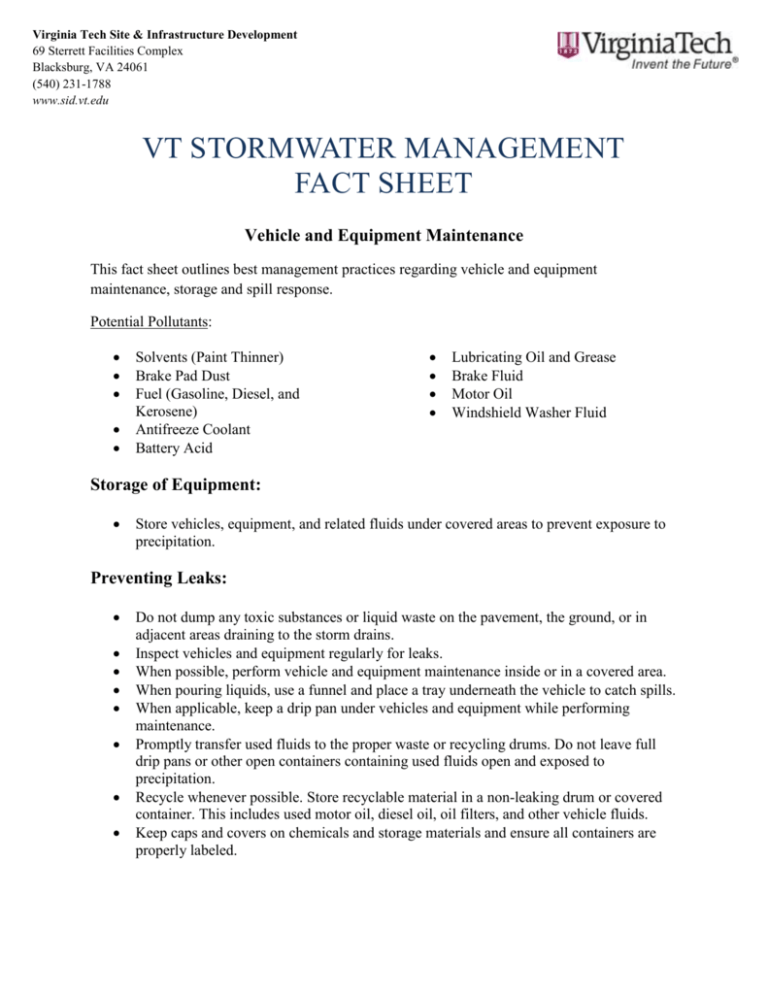
Virginia Tech Site & Infrastructure Development 69 Sterrett Facilities Complex Blacksburg, VA 24061 (540) 231-1788 www.sid.vt.edu VT STORMWATER MANAGEMENT FACT SHEET Vehicle and Equipment Maintenance This fact sheet outlines best management practices regarding vehicle and equipment maintenance, storage and spill response. Potential Pollutants: Solvents (Paint Thinner) Brake Pad Dust Fuel (Gasoline, Diesel, and Kerosene) Antifreeze Coolant Battery Acid Lubricating Oil and Grease Brake Fluid Motor Oil Windshield Washer Fluid Storage of Equipment: Store vehicles, equipment, and related fluids under covered areas to prevent exposure to precipitation. Preventing Leaks: Do not dump any toxic substances or liquid waste on the pavement, the ground, or in adjacent areas draining to the storm drains. Inspect vehicles and equipment regularly for leaks. When possible, perform vehicle and equipment maintenance inside or in a covered area. When pouring liquids, use a funnel and place a tray underneath the vehicle to catch spills. When applicable, keep a drip pan under vehicles and equipment while performing maintenance. Promptly transfer used fluids to the proper waste or recycling drums. Do not leave full drip pans or other open containers containing used fluids open and exposed to precipitation. Recycle whenever possible. Store recyclable material in a non-leaking drum or covered container. This includes used motor oil, diesel oil, oil filters, and other vehicle fluids. Keep caps and covers on chemicals and storage materials and ensure all containers are properly labeled. Virginia Tech Site & Infrastructure Development 69 Sterrett Facilities Complex Blacksburg, VA 24061 (540) 231-1788 www.sid.vt.edu Reduce the transportation of potential pollutants by only transporting the minimum amount of material required for maintenance. Use drip pans or absorbent material whenever grease containers are emptied. Never leave grease on the ground. Collect and properly dispose of as garbage in a sealed container. Inspect vehicles and equipment and replace faulty pumps and hoses immediately once a leak is discovered. Responding to Spills and Leaks: If possible, move leaking vehicles or equipment indoors or into a covered area. Provide cleanup supplies near designated maintenance areas to facilitate immediate cleanup. Use dry cleanup methods (e.g., rag, damp cloth, or absorbent material) rather than hosing down the area. If the spill or leak is non-hazardous, attempt to contain the spill using a broom and/or absorbent material (absorbent sock). See Photo 1. Block any floor drains in the vicinity to prevent the spill from entering a floor drain. Properly dispose of all used cleaning supplies when cleanup procedures are complete. NOTE: If the spill or leak is significant and will reach the storm drain system, notify Environmental Health and Safety immediately at (540) 231-3600. Photo 1: Absorbent Sock containing an oil spill.
